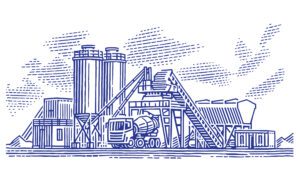Slack IPO: What It Means for Deskless Work Collaboration
 On Wall Street today, all eyes were directed at the listing of Slack, the popular workplace collaboration tool, on the New York Stock Exchange (NYSE:WORK).
On Wall Street today, all eyes were directed at the listing of Slack, the popular workplace collaboration tool, on the New York Stock Exchange (NYSE:WORK).
Shares in the company opened at $38.50, up from a reference price of $26 set on Wednesday, June 19. The stock continued to soar before closing at $38.62, a 49% increase over its reference price. That gave Slack a valuation of $19.5 billion, almost triple its $7.1 billion valuation as a private company.
Slack is a software company that aims to make it easier for employees and teams to communicate and share files instantaneously. Users create and join “channels,” which are group chats usually oriented around a specific topic or team. Users also can send direct messages and files to specific individuals outside of a channel.
While Slack’s stock movements will be closely monitored in the coming weeks and months, its initial performance, by all accounts, was a home run. It clearly signaled that the market believes in the future and growth of the digital collaboration space.
Perhaps more importantly, it also underscores a massive opportunity to bring collaboration technology to the 80% of the workforce that doesn’t sit at a desk, like employees on factory or shop floors who have the same need to digitally connect with each other and get instant feedback while performing work.
For all the benefits that Slack clearly demonstrates to its users, it’s still primarily designed for the office. “Right now, [Slack] can be used for frontline workers, but it’s not designed for that constituency, and those workers have work environments and work requirements that are not simply satisfied by products designed for office workers,” said Mike Gotta, a Gartner analyst covering collaboration and workplace software.
Many of these frontline employees spend their days in industrial settings – manufacturing production lines and energy plants, for example – where streamlined, real-time communication across teams is critical to ensure work safety, efficiency and quality.
Because they aren’t tied to a desk all day, frontline workers need to be able to share knowledge and access information on the go, using mobile-first industrial collaboration tools.
Another area of opportunity is the ability to gather all that data between how work is meant to be performed, how it’s actually executed, and all the variables inbetween – including those that are captured via real-time, human-to-human (i.e., collaborative) interactions. This enables management to more easily and accurately iterate and optimize work processes for continuous improvement.
The takeaway from today’s news: Collaboration software is currently red-hot, and we need to make sure it meets the needs and improves the productivity of all workers – those who sit (or stand) at their desks and those on the factory floor.







